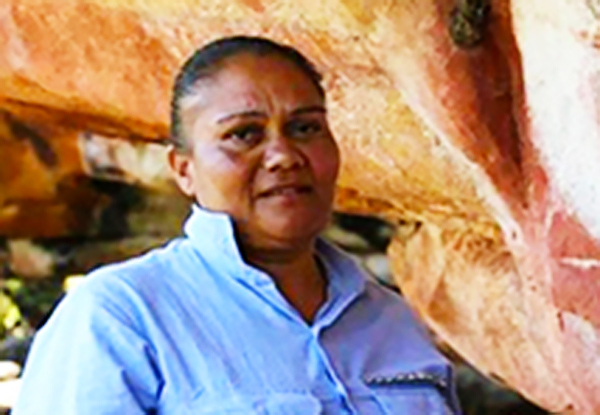The Art of Connection – Interviews with Australian Aboriginal Artists
Many people think that all Australian Aboriginal art is the dot style of painting. They might also believe that all Aboriginal artists are older people who live in the desert. They may not not realise that Aboriginal art is extraordinary in its diversity and so too are the artists who create it.
This is a collection of interviews with ten Indigenous Australian artists. They talk about how they came to start painting and who nurtured and inspired them.
This group of artists include people who live in all parts of Australia - in cities, towns and remote communities, in the desert and near the sea. You'll find artists who are highly articulate English speakers. You'll meet others who speak English but usually use one or more of the Australian Aboriginal languages they have grown up with.
We have included in this collection interviews from artists at different stages of their careers. Cynthia Burke is speaking at the launch of her first solo exhibition at Japingka. Other artists, like Sarrita King, are recognised internationally. We've included artists who are in their twenties and other artists who are elders in their community.
Some artists still live on their traditional lands; some live in the suburbs - they all have a close connection to Aboriginal culture. Some paint Dreamtime stories and follow strict clan protocols about what subjects they can paint, others have developed styles independent of Dreamtime stories.
Common themes shine through - joy, connection to country and family.
If you've ever wanted an opportunity to sit and listen to an Aboriginal artist, here's your chance.
Artist: Cynthia Burke
Cynthia Burke remembers that her mother, the late well-known painter Jean Burke, was always painting.
She also recalls the older people of her community telling Dreamtime stories.
Cynthia took up painting at the age of 10.
Now she goes to the Arts Centre after work every day.
She says she will often paint at night and on the weekends as well because she loves it.
Cynthia is from the Warakurna community located to the north east of the Goldfields Region of Western Australia.
Read: Cynthia Burke And Her View From The Sky
View: Cynthia Burke Artwork
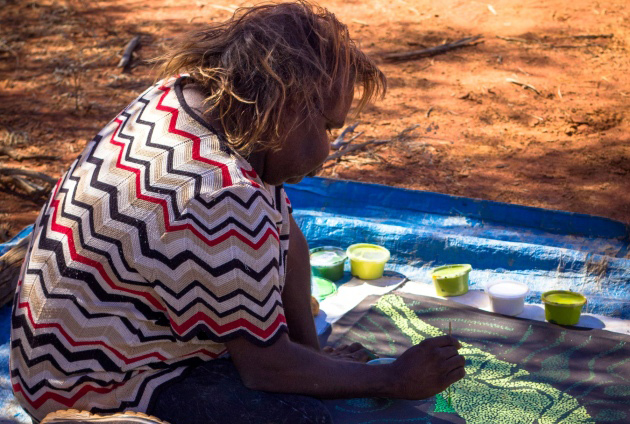
Artist: Edna Dale
Edna Dale never wants her father to be forgotten.
The late Jack Dale started painting in his late 70's.
He recorded stories from his traditional country of Imintji and Bell Gorge.
Jack passed these stories on to Edna, and she, in turn, is nurturing the art and cultural knowledge of her daughter Petrina.
They paint together at their community on the Gibb River Road and in Derby in the Kimberley region of Western Australia.
Read: What My Father Jack Dale Taught
View Connected Works: Jack Dale Mengenen Artwork
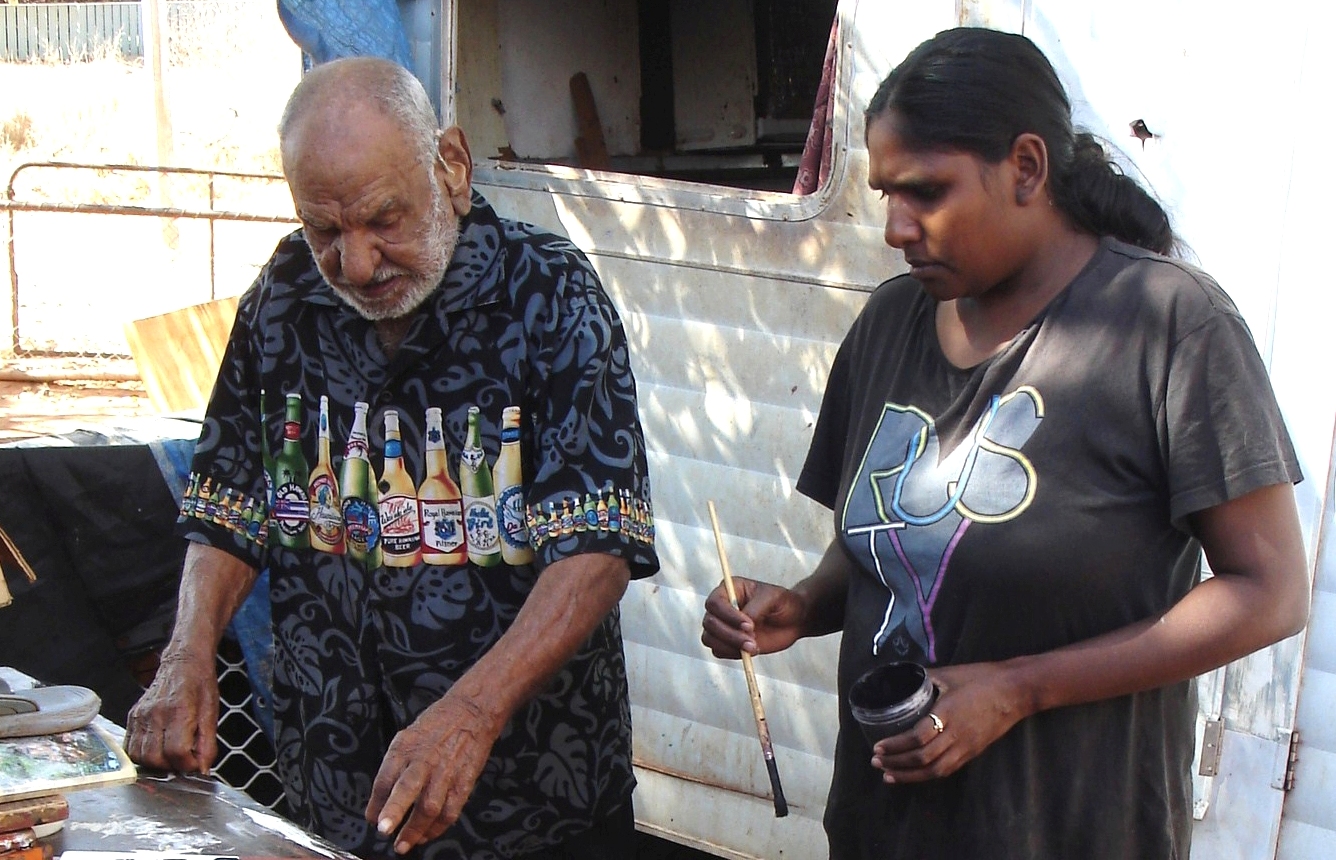
Artist: Maria Josette Orsto
Tiwi Island artist Maria Josette Orsto will sometimes work on a painting for as long as three months.
She loves to travel to exhibitions, but she says her heart belongs to her island home.
The Tiwi Islands are part of Australia's Northern Territory.
They are 80 km to the north of Darwin.
Maria encourages people to come and visit the Tiwi Islands and see how the art is made.
She says she loves everything to do with her art.
Read: In Conversation With Maria Josette Orsto
View: Maria Josette Orsto Artwork
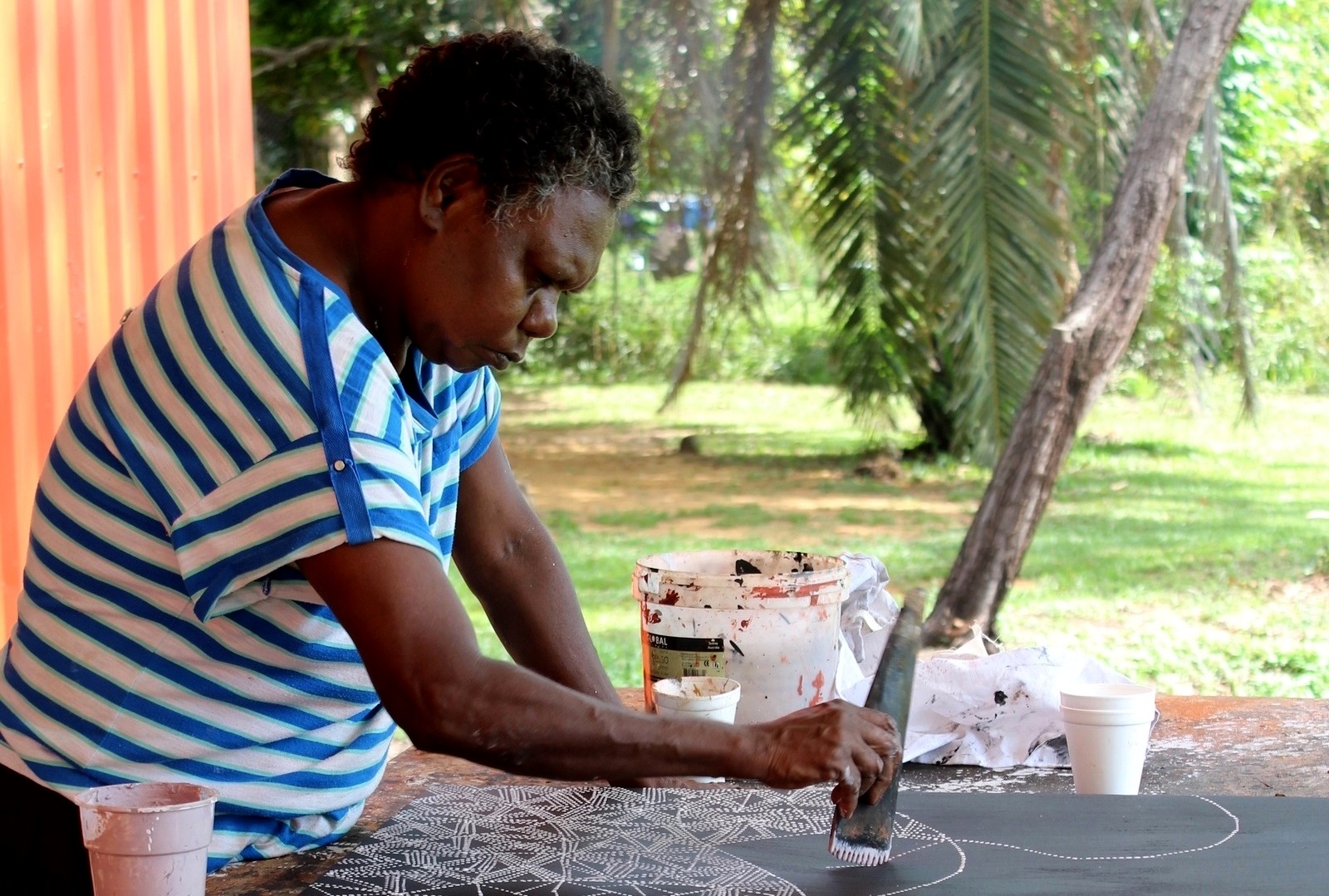
Artist: Josie Petrick Kemarre
In this interview, Josie Petrick Kemarre had just returned from visiting family in Tennant Creek in the Northern Territory of Australia.
She'd been ill, and a witch doctor woman had healed her using bush medicine.
Josie says she mostly taught herself to paint.
She also learnt by watching Emily, Gloria and Kathleen Petyarre painting.
Josie says painting makes her feel happy.
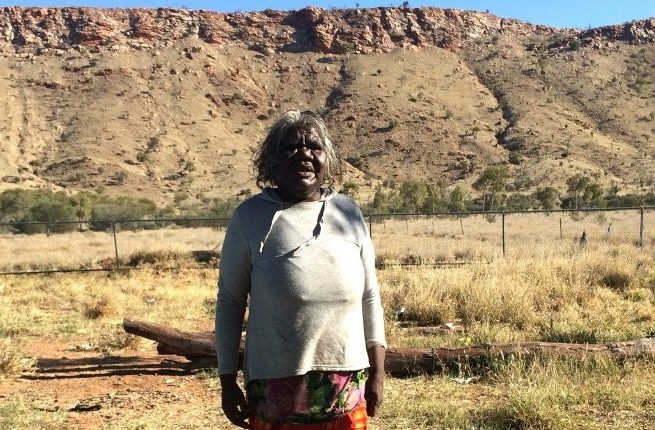
Artist: Kurun Warun
Kurun Warun describes himself as very independent. He says he steers away from traditional spiritual stories and prefers to paint about his life and experience.
He talks about a powerful moment when he saw a painting by the Italian artist Giuseppe Pennasilico called The End of a Dream at the National Gallery in Sydney. He was very moved and describes seeing that art as the moment when art came to live in him.
Read: Guess Which Italian Master Inspired Kurun Warun
Kurun Warun talks about what it feels like to have people love his art.
He reflects on his ancestry, his favourite works and his feelings about Prime Minister Kevin Rudd's apology to the Stolen Generation.
Kurun talks about going back to visit his ancestral homelands in Victoria.
Read: Kurun Warun On Country, Choices & Living Culture
View: Kurun Warun Artwork
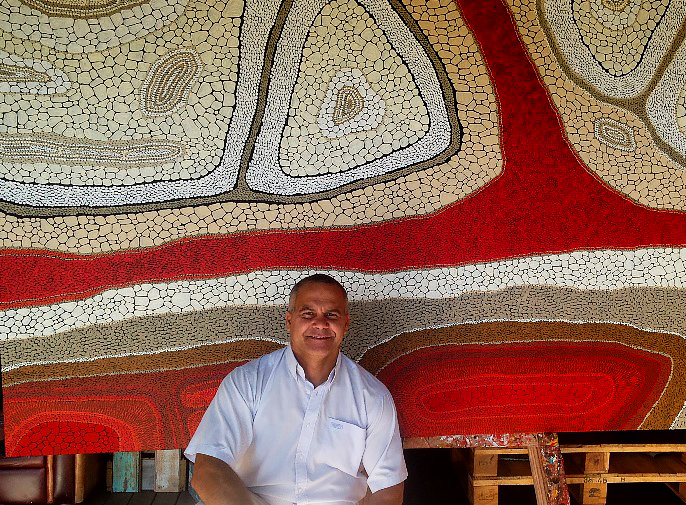
Artist: Sarrita King
Sarrita King remembers the timeless, beautiful Fire Story that her father liked to tell. It is a story about how when we sit by a fire we connect to our ancestors and each other. Sarrita reflects that this same feeling is about being human and belonging to a community.
Read: Sarrita King: Fire And What It Is To Be Human
Sarrita King is the daughter of an artist and storyteller. She feels that what sets Aboriginal art apart is the story behind it.
Sarrita explains that when you walk into an Aboriginal art gallery, it’s like you’re walking into a book. She says that you are walking into knowledge, into a beautiful picture book where every image you see has a soul. Sarrita believes this has a meaning, an intention behind it.
Read: Sarrita King – Art, Passion and Story Telling
View: Sarrita King Artwork
View Connected Works: Tarisse King Artwork
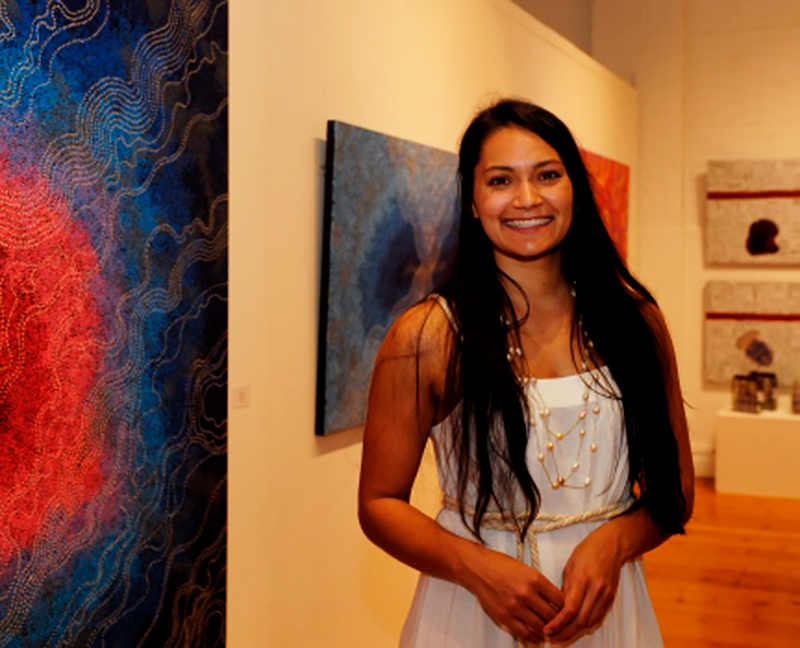
Artist: Kerry McCarthy
This interview took place on the day Kerry Madawyn McCarthy found out the prestigious Janet Holmes à Court Collection had acquired the feature work from her exhibition.
The painting was about her grandfather who was a major influence in her life. Kerry comes from the Daly River in the Northern Territory.
She is a self-taught artist who remembers painting and drawing as a child.
Kerry says she is grateful that she has something that she loves doing.
Read: Kerry McCarthy: Grandfather’s Song & The Janet Holmes à Court Collection
View: Kerry McCarthy Artwork
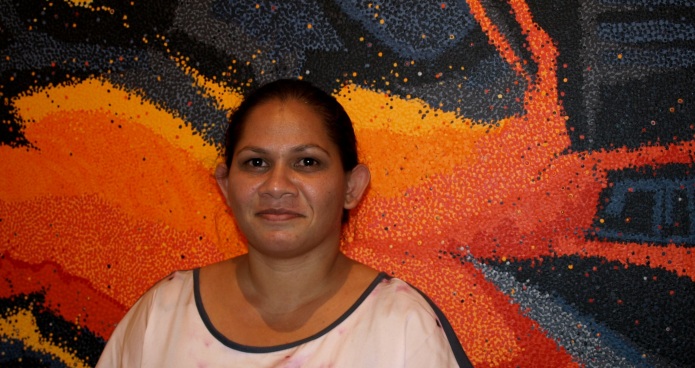
Artist: Rosella Namok
Rosella Namok paints about her home country at Lockhart River on Cape York Peninsula in Queensland.
She has a studio in Cairns where neighbour’s cats, little green tree frogs and tiny black bush bees sometimes visit.
These visits can be a problem if her paintings are still wet.
Rosella says if you paint it needs to come from your heart. She encourages artists to express things about where they grew up and what they love.
Read: Rosella Namok Artist Profile
View: Rosella Namok Artist Bio & Artwork
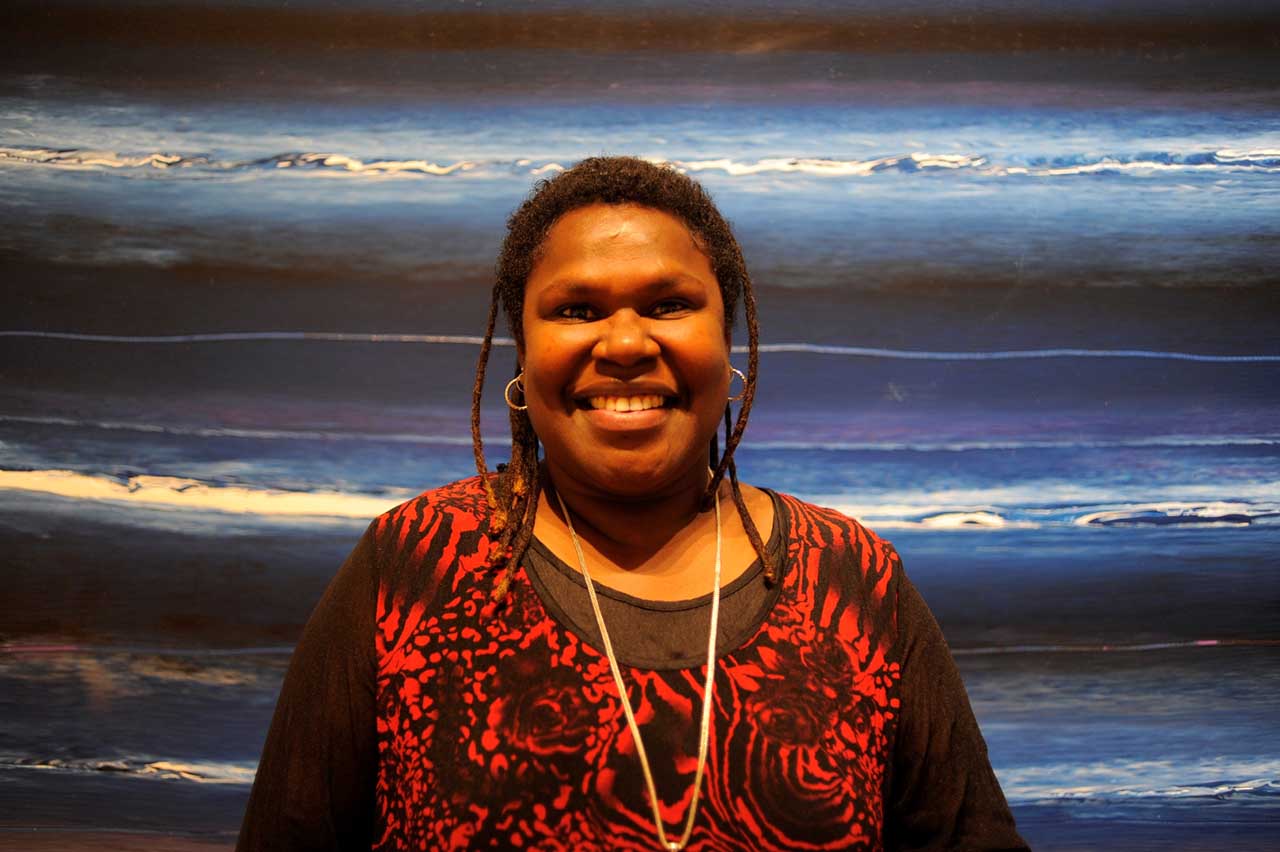
Artist: Marcia Purdie
Marcia Purdie lives with her children at Turkey Creek.
This is a small community located 3019 km from Perth and 858 km east of Broome on the Great Northern Highway.
As a young mother, Marcia spent a lot of time listening to the Dreamtime stories of the older people in the community.
She was encouraged to paint by her grandparents, her mother-in-law Shirley Purdie and artist Queenie McKenzie who she knew well.
Marcia says she finds spending time painting has been healing for her.
Read: Marcia Purdie & The Storytellers of Warmun
View: Marcia Purdie Artwork
View Connected Works: Queenie McKenzie Artwork
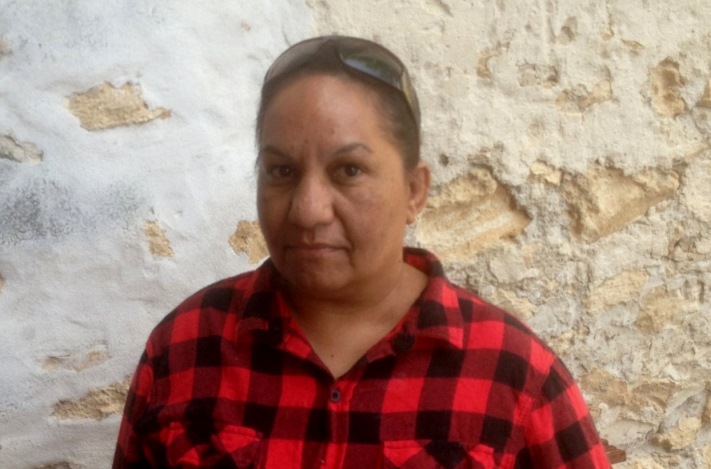
Artist: Leah Umbagai
Mowanjum is located 10 km south east of Derby in the Kimberley region of Western Australia.
Mowanjum artist Leah Umbagai talks in this interview about the three tribal groups; Worrorra, Ngarinyin and Wunumbal.
These three language groups all recognise that Wandjina as the Creator spirit of their Country. He created the country, the people and the landscape from the beginning of time when people were first together.
Leah talks about the significance of the Wandjina which is the first Indigenous iconography to be trademarked in Australia.
Read: Wandjinas, Ochre and The Art of Mowanjum People
Kimberley rock art is exciting academic interest all over the world. Visitors to the Kimberley are keen to see this ancient art and will often visit without permission or a guide. For the traditional owners, the rock art has an entirely different meaning. In this interview, Leah Umbagai explains how she feels about her local rock art and why having a guide is important.
Read: Kimberley Rock Art – A Traditional Owner’s Perspective
